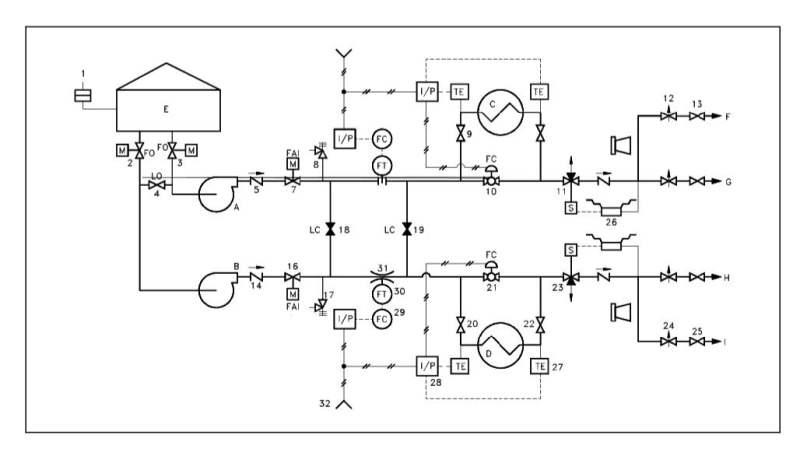LittleInch
Petroleum
Ok, we're having a debate internally here about what is "normally" done on a P & ID.
Do you
A) Show deliberately a little vertical line next to each flanged valve to indicate it's a flanged valve or
B) Assume all the valves in a plant are flanged valves.
If B how do you show when it is deliberately a welded end valve you want (e.g. last valve going into a long gas pipeline)
I've seen both ways and A really annoys me as you get little lines all over the place and then you can't see it or it gets lost in all the other data.
We're talking fairly basic P & IDs here, not the all singing all dancing "intelligent" P & IDs.
Spool pieces, blind flanges on e.g. drain valves are shown but "normal valves"?
Answers on a postcard please....
Thanks, LI
Remember - More details = better answers
Also: If you get a response it's polite to respond to it.
Do you
A) Show deliberately a little vertical line next to each flanged valve to indicate it's a flanged valve or
B) Assume all the valves in a plant are flanged valves.
If B how do you show when it is deliberately a welded end valve you want (e.g. last valve going into a long gas pipeline)
I've seen both ways and A really annoys me as you get little lines all over the place and then you can't see it or it gets lost in all the other data.
We're talking fairly basic P & IDs here, not the all singing all dancing "intelligent" P & IDs.
Spool pieces, blind flanges on e.g. drain valves are shown but "normal valves"?
Answers on a postcard please....
Thanks, LI
Remember - More details = better answers
Also: If you get a response it's polite to respond to it.

